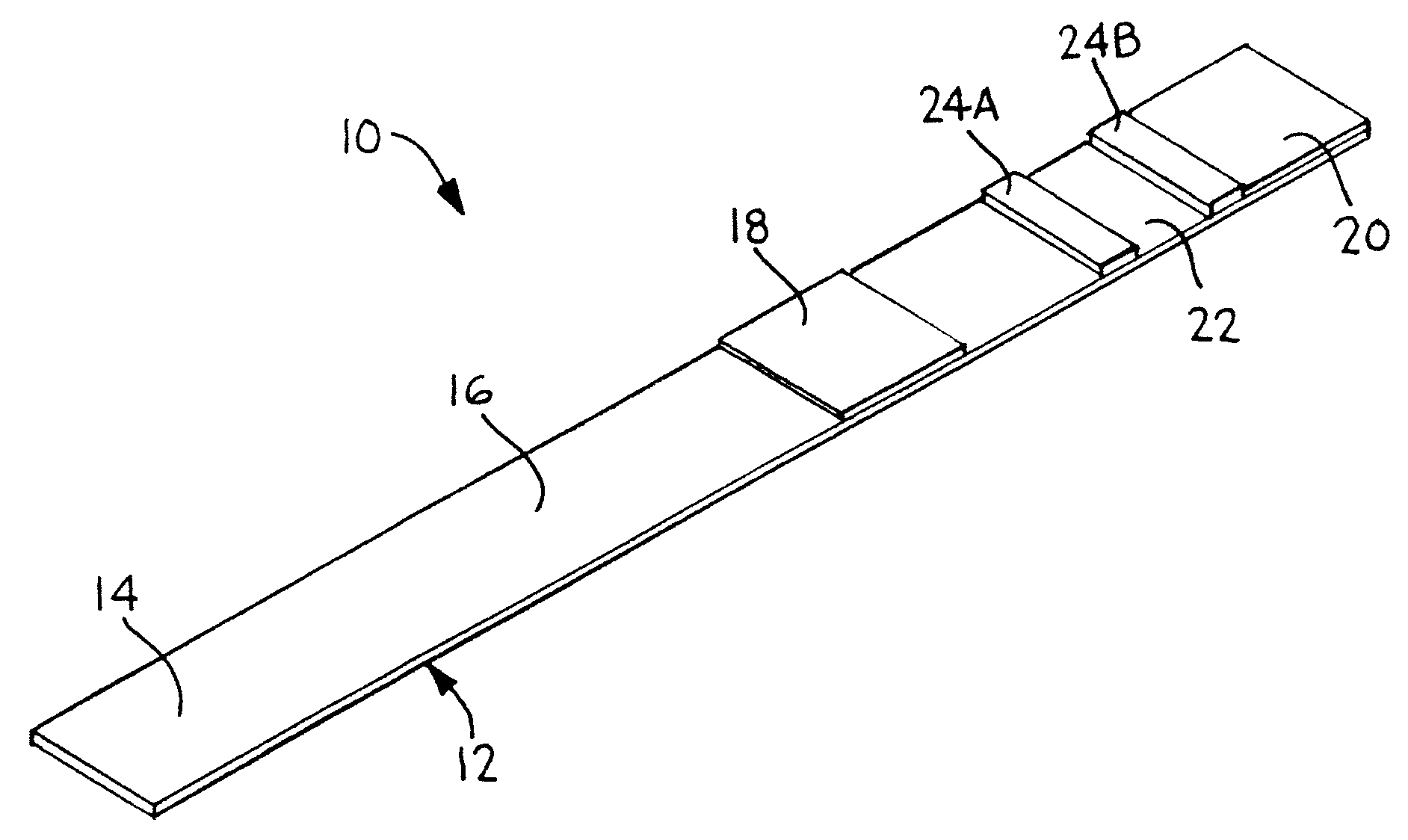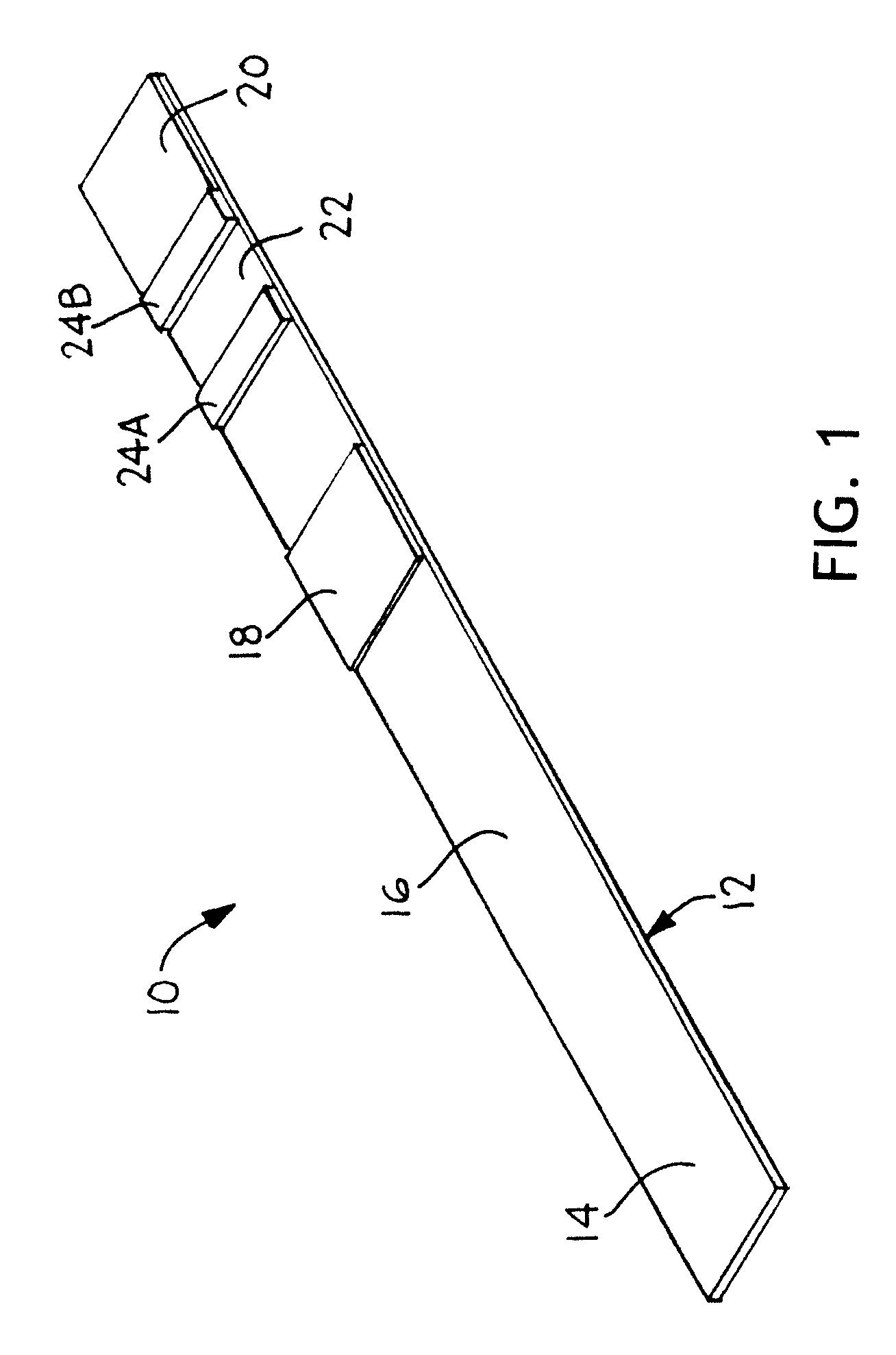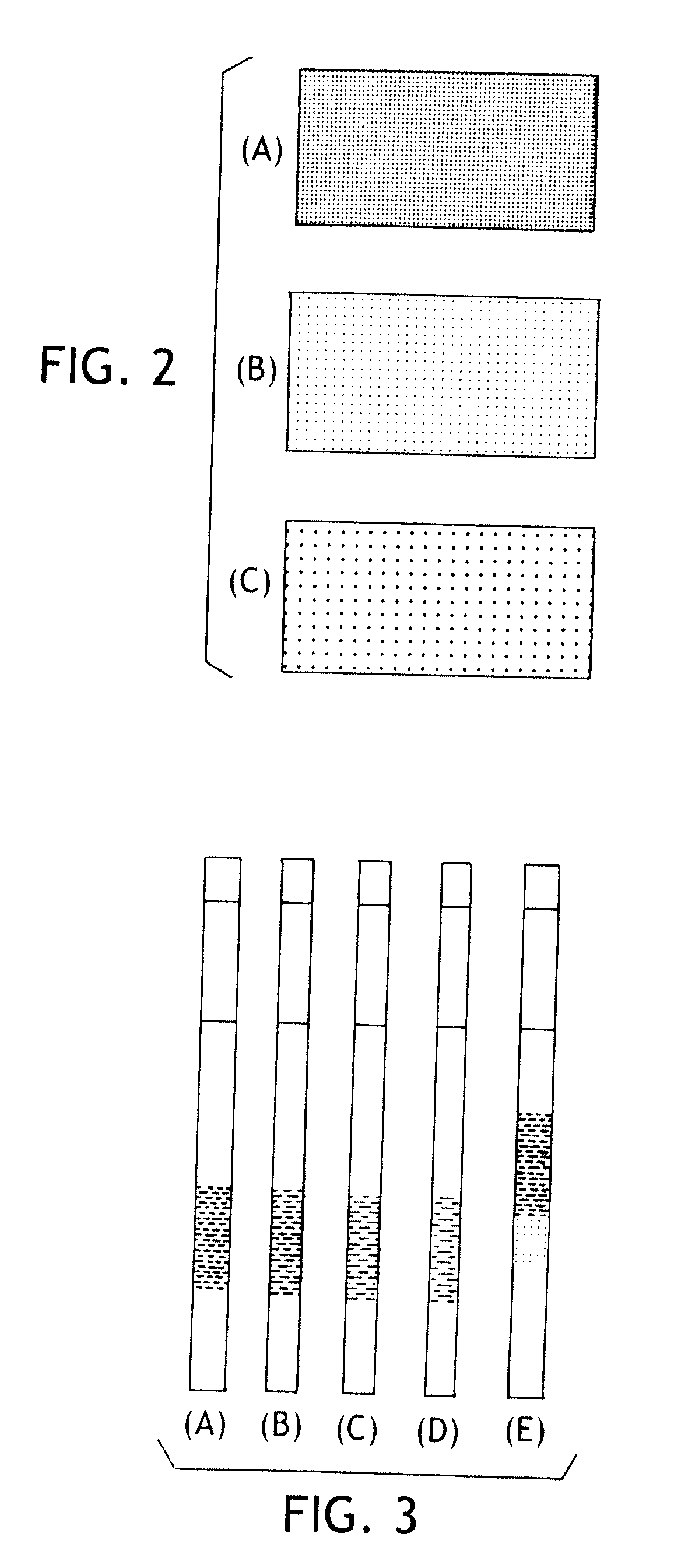Hydration/dehydration sensor
a technology of dehydration sensor and sensor, which is applied in the field of sensors and absorbent products, can solve the problems of serious consequences for a dehydrated person, dehydration or hypohydration, and fluid imbalances that can be linked to either dehydration or hypohydration, and achieve the effect of reducing or eliminating errors
- Summary
- Abstract
- Description
- Claims
- Application Information
AI Technical Summary
Benefits of technology
Problems solved by technology
Method used
Image
Examples
Embodiment Construction
[0023]Conventional urine testing devices, such as dipsticks or test strips, operate by dipping the dipstick in a urine sample and pulling it out quickly, and then read the resultant color that can be compared with a color scale. Typically these test strips have a short reading window, typically about or less than two minutes, and do not have any user feedback mechanism. Recently, an improved hydration monitoring and test format was developed, as described in U.S. patent application Ser. No. 11 / 956,428, the contents of which are incorporated herein by reference. Unlike previously developed lateral flow hydration test formats, the hydration monitoring and assay device according to U.S. patent application Ser. No. 11 / 956,428 has a reading window with a much longer duration of at least about 2 hours, typically about 4-6 hours or greater, with stable color signal and a user feedback zone to indicate a sample volume and sample contact with the test zone. The long reading window and long t...
PUM
 Login to View More
Login to View More Abstract
Description
Claims
Application Information
 Login to View More
Login to View More - R&D
- Intellectual Property
- Life Sciences
- Materials
- Tech Scout
- Unparalleled Data Quality
- Higher Quality Content
- 60% Fewer Hallucinations
Browse by: Latest US Patents, China's latest patents, Technical Efficacy Thesaurus, Application Domain, Technology Topic, Popular Technical Reports.
© 2025 PatSnap. All rights reserved.Legal|Privacy policy|Modern Slavery Act Transparency Statement|Sitemap|About US| Contact US: help@patsnap.com



